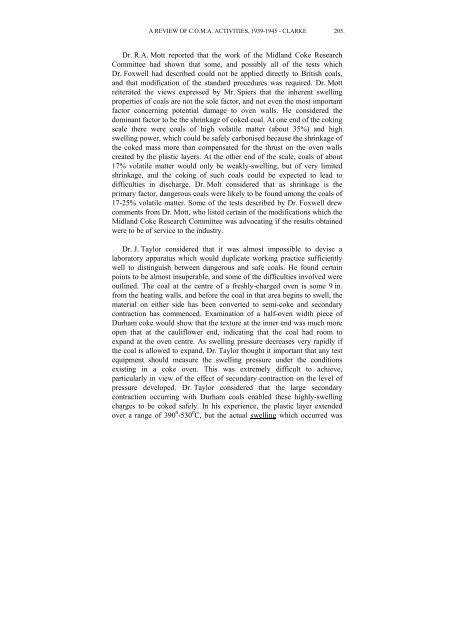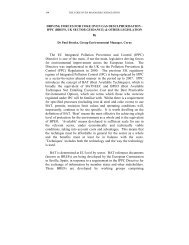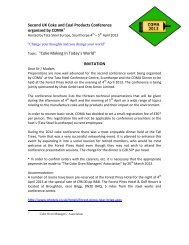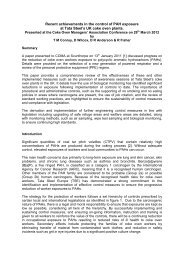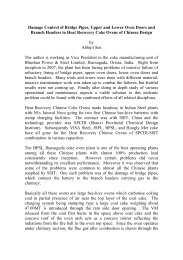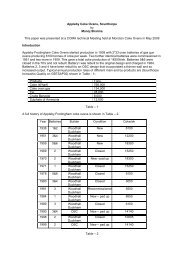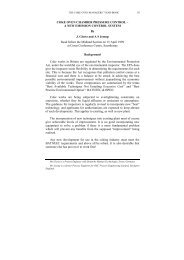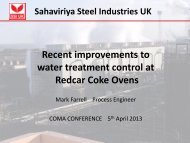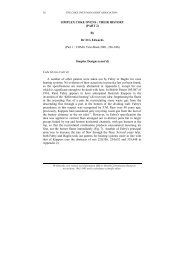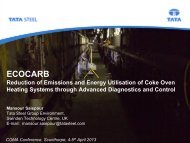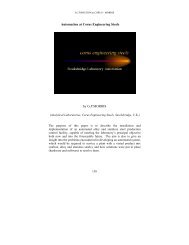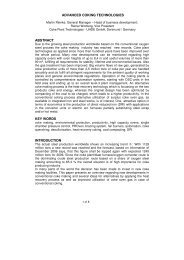CHAIRMAN'S ADDRESS - Coke Oven Managers Association
CHAIRMAN'S ADDRESS - Coke Oven Managers Association
CHAIRMAN'S ADDRESS - Coke Oven Managers Association
- No tags were found...
You also want an ePaper? Increase the reach of your titles
YUMPU automatically turns print PDFs into web optimized ePapers that Google loves.
A REVIEW OF C.O.M.A. ACTIVITIES, 1939-1945 - CLARKE 205.Dr. R.A. Mott reported that the work of the Midland <strong>Coke</strong> ResearchCommittee had shown that some, and possibly all of the tests whichDr. Foxwell had described could not be applied directly to British coals,and that modification of the standard procedures was required. Dr. Mottreiterated the views expressed by Mr. Spiers that the inherent swellingproperties of coals are not the sole factor, and not even the most importantfactor concerning potential damage to oven walls. He considered thedominant factor to be the shrinkage of coked coal. At one end of the cokingscale there were coals of high volatile matter (about 35%) and highswelling power, which could be safely carbonised because the shrinkage ofthe coked mass more than compensated for the thrust on the oven wallscreated by the plastic layers. At the other end of the scale, coals of about17% volatile matter would only be weakly-swelling, but of very limitedshrinkage, and the coking of such coals could be expected to lead todifficulties in discharge. Dr. Molt considered that as shrinkage is theprimary factor, dangerous coals were likely to be found among the coals of17-25% volatile matter. Some of the tests described by Dr. Foxwell drewcomments from Dr. Mott, who listed certain of the modifications which theMidland <strong>Coke</strong> Research Committee was advocating if the results obtainedwere to be of service to the industry.Dr. J. Taylor considered that it was almost impossible to devise alaboratory apparatus which would duplicate working practice sufficientlywell to distinguish between dangerous and safe coals. He found certainpoints to be almost insuperable, and some of the difficulties involved wereoutlined. The coal at the centre of a freshly-charged oven is some 9 in.from the heating walls, and before the coal in that area begins to swell, thematerial on either side has been converted to semi-coke and secondarycontraction has commenced. Examination of a half-oven width piece ofDurham coke would show that the texture at the inner end was much moreopen that at the cauliflower end, indicating that the coal had room toexpand at the oven centre. As swelling pressure decreases very rapidly ifthe coal is allowed to expand, Dr. Taylor thought it important that any testequipment should measure the swelling pressure under the conditionsexisting in a coke oven. This was extremely difficult to achieve,particularly in view of the effect of secondary contraction on the level ofpressure developed. Dr. Taylor considered that the large secondarycontraction occurring with Durham coals enabled these highly-swellingcharges to be coked safely. In his experience, the plastic layer extendedover a range of 390 0 -530 0 C, but the actual swelling which occurred was


